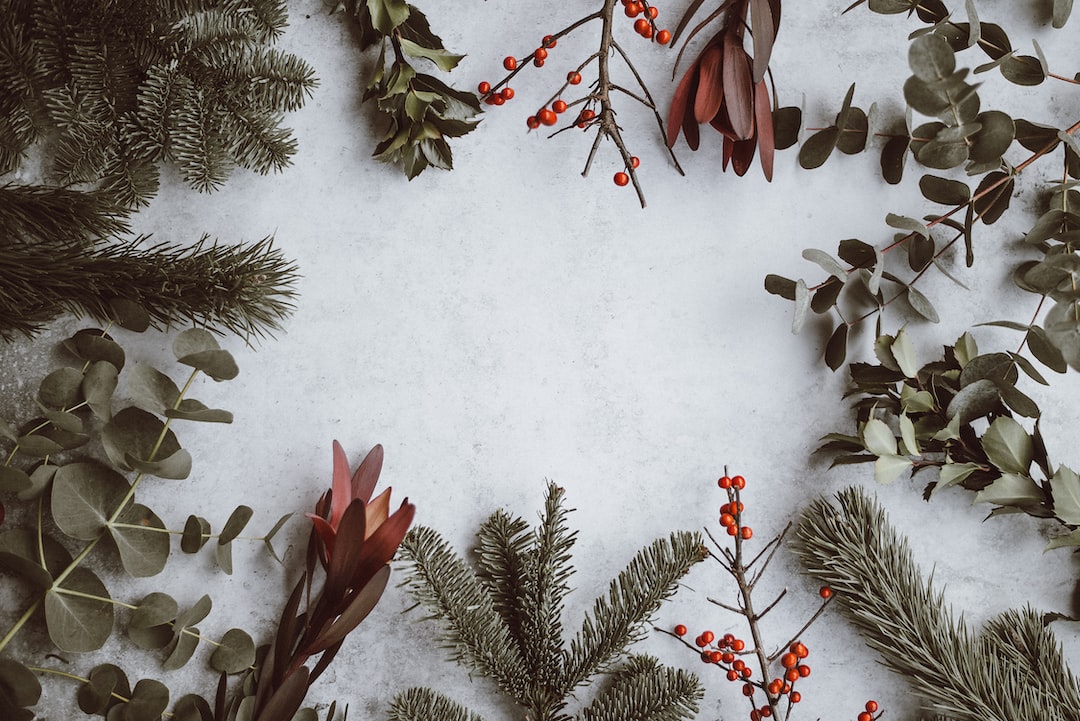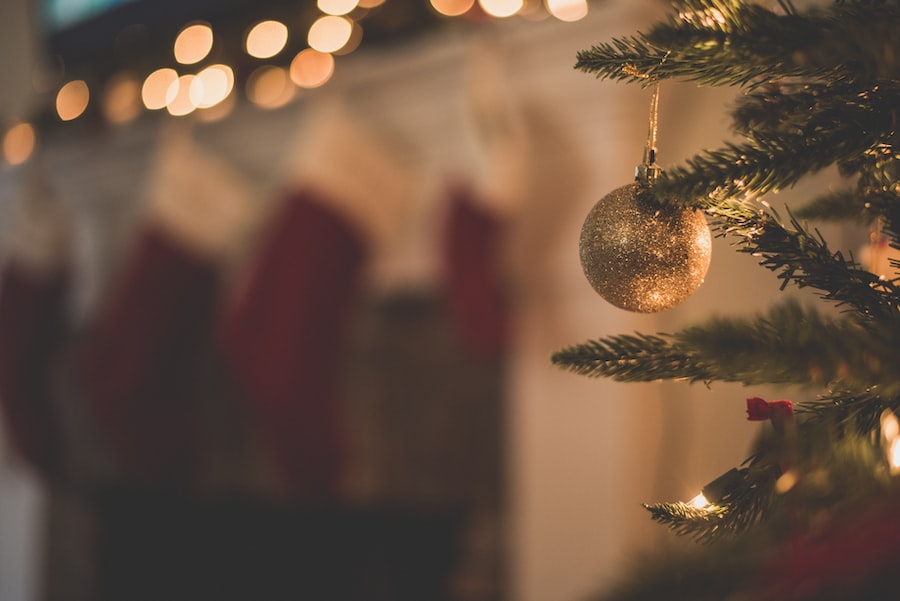Post-Christmas Poinsettia Care: Keeping Your Festive Foliage Flourishing

Poinsettias have long been associated with the holiday season, adorning homes and businesses with their vibrant red and green foliage. These beautiful plants have a rich history, originating from Mexico and named after Joel Poinsett, the first United States Ambassador to Mexico who introduced them to the US in the early 19th century. Poinsettias have become a symbol of Christmas and are often given as gifts or used as decorations during the holiday season.
While poinsettias are commonly enjoyed during Christmas, many people are unaware of the importance of caring for these plants after the holiday season. Proper post-Christmas care is crucial for maintaining the health and longevity of your poinsettia. In this blog post, we will explore various topics related to poinsettia care, including watering tips, light requirements, temperature control, fertilization, pruning and pinching, pest and disease control, repotting, and winter storage. By following these guidelines, you can enjoy your poinsettia year-round and ensure its continued growth and beauty.
Key Takeaways
- Proper post-Christmas care is crucial for the health and longevity of your poinsettia.
- Water your poinsettia when the soil feels dry to the touch, but avoid overwatering.
- Poinsettias need bright, indirect light to thrive, but avoid direct sunlight.
- Keep your poinsettia in a room with temperatures between 60-70°F and away from drafts.
- Fertilize your poinsettia every 2-3 weeks with a balanced fertilizer to promote growth.
Watering Tips: How Much and How Often to Water Your Poinsettia
Proper watering is essential for the health of your poinsettia. Overwatering or underwatering can lead to root rot or dehydration, respectively, which can ultimately cause the plant to die. To determine when to water your poinsettia, check the soil moisture level by inserting your finger about an inch into the soil. If it feels dry at that depth, it’s time to water.
When watering your poinsettia, it’s important to provide enough water to thoroughly moisten the soil without leaving it waterlogged. Allow excess water to drain out of the pot to prevent root rot. It’s also important to avoid letting your poinsettia sit in standing water, as this can lead to root rot as well.
To avoid overwatering, make sure the pot has drainage holes and use a well-draining potting mix. It’s better to underwater than overwater your poinsettia, as they are more tolerant of dry conditions than wet conditions. However, be careful not to let the soil dry out completely, as this can cause stress to the plant.
Light Requirements: Providing Adequate Light for Your Poinsettia
Proper lighting is crucial for the health and growth of your poinsettia. These plants thrive in bright, indirect light. They should be placed near a window where they can receive at least six hours of bright, indirect sunlight each day. Avoid placing your poinsettia in direct sunlight, as this can cause the leaves to burn.
If you don’t have a suitable location with enough natural light, you can supplement with artificial light. Use fluorescent lights or grow lights specifically designed for plants to provide the necessary light intensity and spectrum. Place the lights about 12 inches above the plant and keep them on for 12-14 hours a day.
It’s important to avoid light-related issues such as leggy growth or leaf drop. Leggy growth occurs when a poinsettia doesn’t receive enough light and stretches towards the light source. To prevent this, rotate your poinsettia every few days to ensure even exposure to light. Leaf drop can occur if a poinsettia is suddenly moved from a low-light environment to a high-light environment. To avoid leaf drop, gradually acclimate your poinsettia to brighter light by increasing its exposure over a period of several days.
Temperature Control: Keeping Your Poinsettia in the Right Environment
| Temperature Range | Effect on Poinsettia |
|---|---|
| 60-70°F (15-21°C) | Ideal temperature range for poinsettias |
| Below 50°F (10°C) | Can cause leaf drop and damage to the plant |
| Above 75°F (24°C) | Can cause wilting and premature aging of the plant |
| Fluctuating temperatures | Can cause stress and damage to the plant |
Poinsettias are native to Mexico and prefer warm temperatures between 65-75°F (18-24°C). They are sensitive to cold drafts and temperature extremes, so it’s important to keep them in a stable environment. Avoid placing your poinsettia near doors, windows, or heating vents where it may be exposed to drafts or temperature fluctuations.
If the temperature drops below 50°F (10°C), your poinsettia may suffer damage or even die. It’s important to protect your poinsettia from cold temperatures during transportation, especially if you live in a colder climate. Wrap the plant in a protective covering or use a plant sleeve to shield it from the cold.
On the other hand, poinsettias can also be sensitive to high temperatures. Avoid placing them near heat sources such as radiators or fireplaces, as this can cause the leaves to wilt or drop. If the temperature exceeds 75°F (24°C), consider moving your poinsettia to a cooler location or providing shade during the hottest part of the day.
Fertilization: Feeding Your Poinsettia for Optimal Growth
Fertilization is important for providing your poinsettia with the necessary nutrients for healthy growth. It’s best to start fertilizing your poinsettia about a month after you’ve purchased it or after the holiday season. Use a balanced, water-soluble fertilizer with equal amounts of nitrogen, phosphorus, and potassium (such as a 20-20-20 or 10-10-10 fertilizer).
Fertilize your poinsettia every two weeks during the spring and summer months when it is actively growing. Follow the instructions on the fertilizer packaging for proper dilution and application rates. Be careful not to over-fertilize your poinsettia, as this can lead to salt buildup in the soil and cause root damage. If you notice white crusty deposits on the soil surface, it’s a sign of over-fertilization.
During the fall and winter months, reduce the frequency of fertilization to once a month or stop altogether. Poinsettias naturally go through a period of dormancy during this time, and they don’t require as much fertilizer. Resume regular fertilization in the spring when new growth begins.
Pruning and Pinching: Maintaining the Shape and Size of Your Poinsettia

Pruning and pinching are important for maintaining the desired shape and size of your poinsettia. Pruning involves removing dead or damaged leaves and stems, while pinching involves removing the tips of the stems to encourage branching and bushier growth.
Pruning should be done as needed throughout the year to remove any dead or diseased foliage. Use clean, sharp pruning shears to make clean cuts and prevent the spread of disease. It’s also a good idea to disinfect your pruning tools with rubbing alcohol before and after each use.
Pinching should be done in the spring when new growth begins. Pinch off the top inch or two of each stem to encourage branching and bushier growth. This will result in a fuller, more compact plant. Repeat this process every few weeks until mid-summer.
Pest and Disease Control: Protecting Your Poinsettia from Common Issues
Poinsettias can be susceptible to various pests and diseases, including aphids, whiteflies, mealybugs, powdery mildew, and root rot. It’s important to regularly inspect your poinsettia for any signs of infestation or disease.
If you notice pests such as aphids or whiteflies, you can try using insecticidal soap or neem oil to control them. Follow the instructions on the product packaging for proper application rates and methods. It’s important to treat both the upper and lower surfaces of the leaves, as well as the stems.
Powdery mildew can be controlled by improving air circulation around the plant and avoiding overhead watering. If powdery mildew is present, you can try using a fungicide specifically formulated for powdery mildew control. Follow the instructions on the product packaging for proper application rates and methods.
To prevent root rot, it’s important to avoid overwatering and provide proper drainage for your poinsettia. If root rot is present, you may need to repot your poinsettia in fresh, well-draining soil and trim away any affected roots.
Repotting: When and How to Repot Your Poinsettia
Repotting is important for providing your poinsettia with fresh soil and adequate space for root growth. It’s best to repot your poinsettia in the spring when new growth begins. Choose a pot that is one size larger than the current pot and has drainage holes.
To repot your poinsettia, gently remove it from its current pot and loosen the roots. Place a layer of fresh potting mix in the bottom of the new pot, then place the poinsettia in the center. Fill in the sides with more potting mix, making sure not to bury the stem too deeply. Water thoroughly after repotting to settle the soil.
It’s important to avoid repotting your poinsettia too often, as this can cause stress to the plant. Poinsettias prefer to be slightly root-bound, so only repot when necessary or every two to three years.
Winter Storage: Preparing Your Poinsettia for Next Year’s Holiday Season
Proper winter storage is important for preparing your poinsettia for next year’s holiday season. In late fall or early winter, gradually reduce watering and allow the plant to enter a period of dormancy. Place your poinsettia in a cool location with temperatures between 55-60°F (13-16°C), such as a basement or garage.
During the dormancy period, water sparingly to prevent the soil from completely drying out. Check the soil moisture level by inserting your finger into the soil. If it feels dry at a depth of about an inch, it’s time to water. Be careful not to overwater, as this can cause root rot.
In late winter or early spring, when new growth begins, gradually increase watering and move your poinsettia to a brighter location with temperatures between 65-75°F (18-24°C). Resume regular care and fertilization to encourage new growth and prepare your poinsettia for next year’s holiday season.
Enjoying Your Poinsettia Year-Round with Proper Care
In conclusion, proper care is essential for enjoying your poinsettia year-round. By following the watering tips, providing adequate light, controlling the temperature, fertilizing appropriately, pruning and pinching, preventing pests and diseases, repotting when necessary, and preparing for winter storage, you can ensure the health and longevity of your poinsettia.
Remember that poinsettias are living plants that require attention and care. With proper care, your poinsettia can continue to thrive and bring beauty to your home long after the holiday season has passed. Put these tips into practice and enjoy a healthy, vibrant poinsettia year-round.



